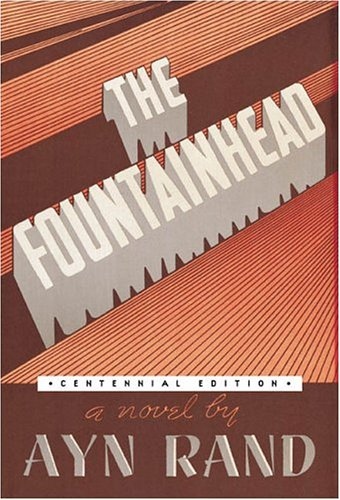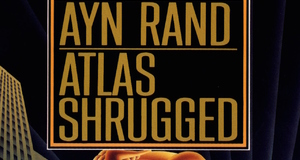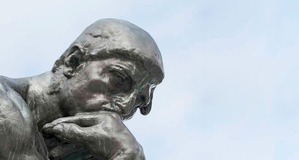Epideictic Oratory in Ayn Rand's "The Fountainhead"
By
2010, Vol. 2 No. 04 | pg. 1/1
KEYWORDS:
“I came here to say that I do not recognize anyone’s right to one minute of my life. No matter who makes the claim, how large their number or how great their need” (Rand 684). So states Howard Roark, protagonist of Ayn Rand’s classic novel, The Fountainhead. His speech is given in a courtroom, in place of his defense against the act of which he has been accused. Roark’s speech aligns closely with the tenets of epideictic oratory, despite being held in a courtroom where one might expect a more forensic style of defense. Howard Roark’s speech in The Fountainhead is nevertheless an excellent example of epideictic oratory.
Roark is taken to court, where he represents himself and intentionally chooses a jury of unsympathetic peers. Keating admits on the witness stand that Roark designed Cortlandt. Roark calls no witnesses, and makes no statement toward his own defense, but instead stands and delivers his speech, which details his philosophy and the importance of personal and professional integrity. He declares his right to exist on his own terms, and recognize no obligations toward men except to respect their freedom (Rand 684). Roark is found not guilty. Epideictic oratory takes place at public events and ceremonies, and considers topics such as praise and blame, virtue and vice. Jeffrey Walker, in his Rhetoric and Poetics in Antiquity, says, “The goal of the epideictic speech was not merely to entertain, but to encourage audience members to “form opinions, or even to revise their existing beliefs and attitudes on a given topic” (9). He concludes that “‘epideictic’ appears as that which shapes and cultivates the basic codes of value and belief by which a society or culture lives” (9). Herrick states, similarly, that epideictic oratory “provided opportunities to reinforce important values having to do with right behavior, or to uphold virtues such as courage, honor, or honesty” (86), and goes on to describe an epideixis as “literally a ‘showing forth,’ the careful presentation of ‘demonstration’ of the virtue of an idea or a practice” (86). Thus, epideictic is more deeply concerned with the state and philosophy of society, and its general honor and wellbeing. “Epideictic speaking thus did not have a pragmatic goal so much as a cognitive or contemplative one—to prompt the audience to think, to reflect, and perhaps to embrace a new idea” (86). As such, epideictic oratory also aims to facilitate potentially revolutionary thinking, and potentially challenge societal norms where they lack justice or effectiveness. Based on the above information from Walker and Herrick, in order for a speech to be epideictic in nature, it must concern itself with virtue and vice, reinforce a set of values, demonstrate the advantage of an idea or practice, and encourage the audience to think or reflect on the subject and potentially form opinions and/or change their beliefs. Howard Roark, though speaking in a courtroom—an entirely forensic setting—delivers a case of purely epideictic oratory. Where forensic oratory would deal with accusation or defense, Roark employs neither. He never denies having blown up the Cortlandt building, nor does he necessarily plead guilty to the act. In fact, following his speech, the question of insanity arises because he has made no case for himself. He states a simple fact of occurrence and the circumstances surrounding it: “Now you know why I dynamited Cortlandt. I designed Cortlandt. I gave it to you. I destroyed it. I destroyed it because I did not choose to let it exist. It was a double monster. In form and in implication. I had to blast both” (Rand 683). Roark spends a paltry few sentences dealing with the subject of what was done. Who did it never comes into question: “I agreed to design Cortlandt for the purpose of seeing it erected as I designed it and for no other reason. That was the price I set for my work. I was not paid. But the owners of Cortlandt got what they needed from me. They wanted a scheme devised to build a structure as cheaply as possible. They found no one else who could do it to their satisfaction. I could and did” (Rand 684). Instead, the vast portion of Roark’s courtroom speech deals with the exclusively epideictic subject of virtue and vice. He presents his own set of values, and proceeds to demonstrate the evil done in the name of selflessness. He talks about the struggles, persecution, and inspiration of creators throughout history. He condemns those whom he calls “second-handers”, who feed on virtuous creators like parasites. He speaks of the evil found in philanthropy and dependence, and of the righteousness of independence and selfishness—individualism over collectivism. He exalts egotism over altruism, saying, “Altruism is the doctrine which demands that man live for others and place others above self” (Rand 680), and citing that any major crime committed upon humanity has been the work of altruism—genocide, mass murders, etc. have all been “for the common good of the people”. The leaders of these crimes have functioned on the basis that what they were doing was unselfish: the ultimate charity, relief from blight or suffering. He says, “Men have been taught that their first concern is to relieve the sufferings of others. To make that the highest test of virtue is to make suffering the most important part of life. Then man must wish to see others suffer—in order that he may be virtuous” (Rand 680). Thus, he viciously and effectively challenges society’s belief that self-sacrifice is virtuous. Roark moves on to use the United States as an example—“a society built on the principle of individualism” (Rand 683). He calls it “the country of greatest achievement, greatest prosperity, greatest freedom”, saying, “this country was not based on selfless service, sacrifice, renunciation or any precept of altruism. It was based on a man’s right to the pursuit of happiness” (Rand 683). Thus he draws on the jury’s pride as Americans, encouraging—almost demanding—that they consider his point: if the United States, “the noblest country in the history of men” (Rand 683), was built not on altruism, but egotism, then surely here is a just and honorable idea. He holds that no man should exist for another man, and that the highest virtue is not to give, but to achieve. “We are taught to admire the second-hander who dispenses gifts he has not produced above the man who made the gifts possible. We praise an act of charity. We shrug at an act of achievement” (Rand 680). He shows that without the selfish creator, there would be nothing for the selfless second-hander to give. The fact that Roark is judged not guilty shows that he succeeded in convincing jury and audience members to “revise their existing beliefs and attitudes” about the relationship between creators and second-handers, and in shaping the “basic codes of value and belief” by which society lived (Walker 9)—thus championing egotism over altruism and epideictic over forensic oratory. In his speech to the jury in Ayn Rand’s The Fountainhead, Howard Roark uses epideictic—not forensic—rhetoric. His speech, designed and delivered as a presentation of values instead of a deliberate defense, nonetheless awards him with a verdict of innocence. Roark’s demonstration of highly effective epideictic rhetoric in a courtroom suggests that the three rhetorical settings are perhaps more interchangeable than Aristotle and fellow rhetoricians present them to be. If an wholly epideictic speech can serve the same purpose (regardless of whether or not this is intended) as a forensic speech, the lines between deliberative, forensic, and epideictic oratory become distinctly blurred, leading us to question the applicability and relevance of ideas thousands of years old. ReferencesAristotle. "Rhetoric.” The Internet Classics Archive. Web Atomics. Herrick, James A. The History and Theory of Rhetoric: An Introduction. Boston: Pearson, 2008. Print. Rand, Ayn. The Fountainhead. New York: Signet, 1996. Print. Walker, Jeffrey. Rhetoric and Poetics in Antiquity. Oxford: Oxford UP, 2000. Print. Suggested Reading from Inquiries Journal
Inquiries Journal provides undergraduate and graduate students around the world a platform for the wide dissemination of academic work over a range of core disciplines. Representing the work of students from hundreds of institutions around the globe, Inquiries Journal's large database of academic articles is completely free. Learn more | Blog | Submit Latest in Literature |

 In the novel, Peter Keating and Howard Roark attend Stanton Institute of Technology together. Roark is expelled from school for turning in building designs that are deemed too modern and for challenging the norms of contemporary architecture, but continues pursuing his work. Keating graduates from Stanton and is immediately hired by a prominent architect. The two men’s lives continually intertwine; Roark struggling almost self-destructively to uphold his own standards and Keating doing whatever it takes to succeed in society.
In the novel, Peter Keating and Howard Roark attend Stanton Institute of Technology together. Roark is expelled from school for turning in building designs that are deemed too modern and for challenging the norms of contemporary architecture, but continues pursuing his work. Keating graduates from Stanton and is immediately hired by a prominent architect. The two men’s lives continually intertwine; Roark struggling almost self-destructively to uphold his own standards and Keating doing whatever it takes to succeed in society.
















